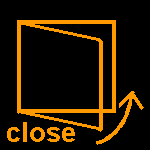Stéréor 6x18
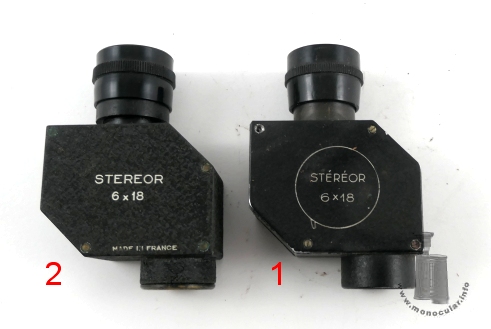
| Von dem seltenen Monokular "Stereor 6x18" aus französischer Produktion liegen zwei Modelle vor. Das Stereor hat eine sechseckigen Korpus, der der Form eines Pentaprismas folgt. So ähnelt das Glas den Möller-Monokularen Tourix und Tourox und dem Zeiss-Telitmo. Beim ersten Exemplar lässt sich der Deckel öffnen, und zeigt, dass es sich dort um ein Hensoldt-Pentaprisma handelt. Der seitlich Gehäusedeckel ist bei dem 2. Exemplar angenietet und lässt sich nicht öffnen; die Durchsicht lässt aber ein kleines Porro-1-Prismensystem erkennen. | Two models of the rare French-made "Stereor 6x18" monocular are shwon here. The Stereor has a hexagonal body shaped like a pentaprism. The glass is similar to the Möller monoculars Tourix and Tourox, and the Zeiss-Telitmo. The side cover plate of the first model can be opened, revealing that it is a Hensoldt pentaprism. The cover of the second model is riveted and cannot be opened; However, the view through the objective lens lets you see there is a small Porro 1 prism system inside. |
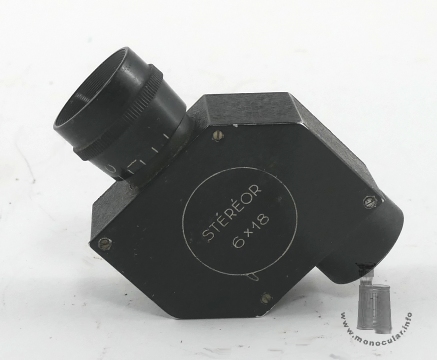
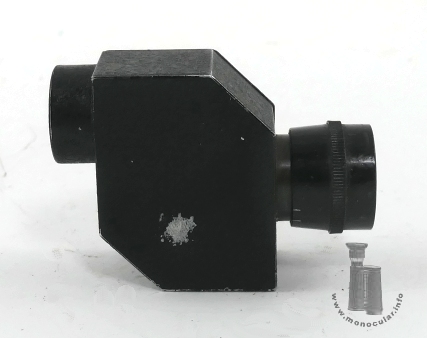
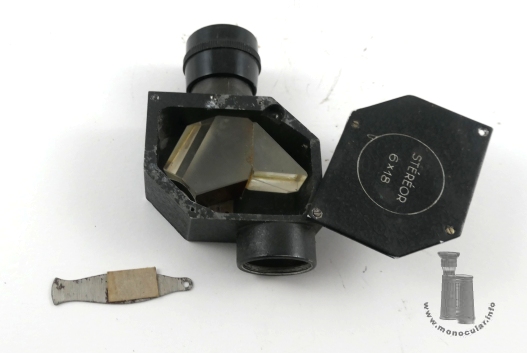
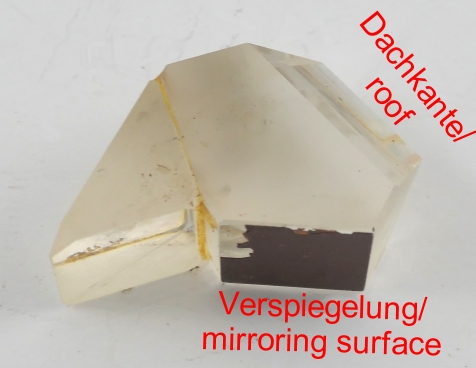
| Da die Linsen beim 2. Modell blau vergütet sind, stammt es wohl aus der frühen Nachkriegszeit (1950er). Ob die 1. unvergütete Variante noch vor dem 2. Weltkrieg gebaut wurde, bleibt offen. Das erste Monokular hat die Beschriftung "Stéréor 6x18" in einem Kreis. Das zweite Monokular ist auch nur mit "STEREOR 6x18" und "Made in France" gekennzeichnet. Die Augenmuscheln beim 2. Exmepalr ist typisch für französische Fabrikationen. Es ist eine 2/3 Plastikaugenmuschel, die aufgeschraubt ist und gleichzeitig das Okularlinsenssytem im Okulartubus hält. Dort folgt ein etwas dickeres Okularstück. Eine Dioptrienskala von +/5 mit Kennzeichnungen bei 0 und 5 gibt es nur beim 1. Exemplar an einer 3/3 Augenmuschel. Die binokulare Variante des Stéréor (Bild 5) gibt an, dass es in Paris gefertigt wurde. Ein konkreter Hersteller lässt sich jedoch nicht bestimmen. |
Since the lenses of the second model are blue-coated, it likely dates from the early postwar period (1950s). Whether the first uncoated version was built before World War II remains unclear. The first monocular is inscribed "Stéréor 6x18" in a circle. The second monocular is also only marked "STEREOR 6x18" and "Made in France." The eyecups are typical of French designs. They are a 2/3 plastic eyecups that is screwed on and simultaneously holds the ocular lens system in the eyepiece tube. There is a diopter scale ranging from + to - 5 - marked with 0 and 5 - on the 3/3 eyecup of the first specimen only. The binocular version of the Stéréor (figure 5) indicates that it was manufactured in Paris. However, a specific manufacturer cannot be determined. |
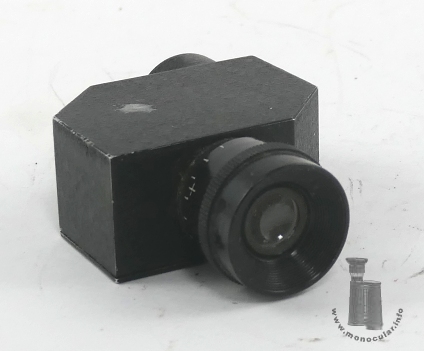
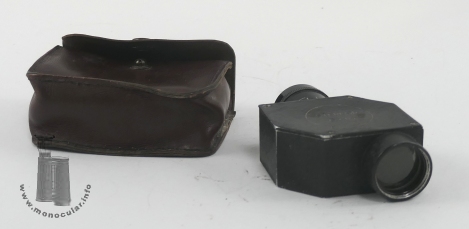
| Das Stereor hat eine Raulackummantelung und besteht vorrangig aus Aluminium und wenigen Messingteilen. Das Monokulargehäuse ist 52x40x27mm breit, gesamt 72-77mm hoch, hat eine 24mm Objektivfassung mit einem Abschlussring (fehlt beim 1. Exemplar) und einen Durchmesser von 27mm an der Augenmuschel und wiegt 105 bzw. 115g. |
The Stereor has a crinkle paint finish and was made mainly of aluminium plus some brass parts. The monocular body measures 52x40x27mm. The glass is 72-77mm tall. It has a 24mm diameter objective frame with a threaded ring at the end (missing on the 1st specimen) and a 27mm diameter at the eyecup. Weight is 115g. |
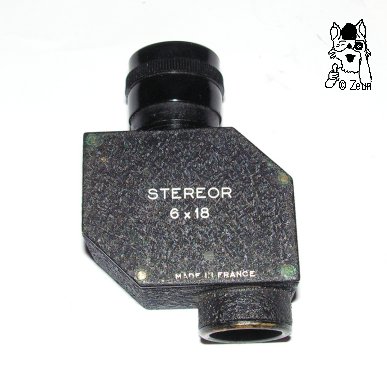
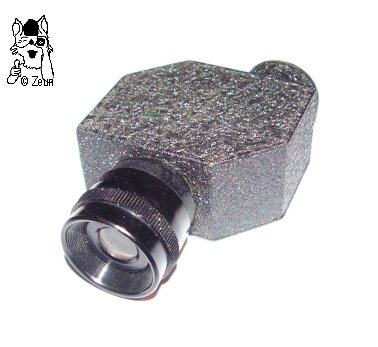
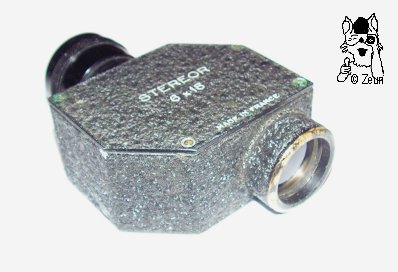
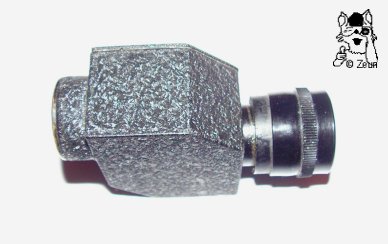
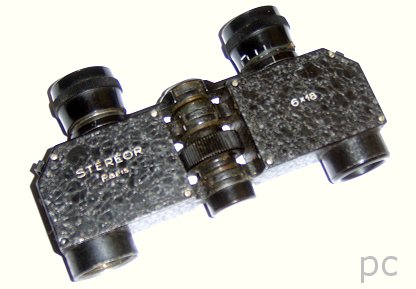
Fotos: Zeun, 12 P.Corell

